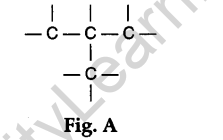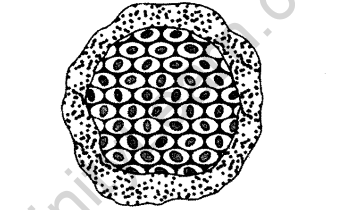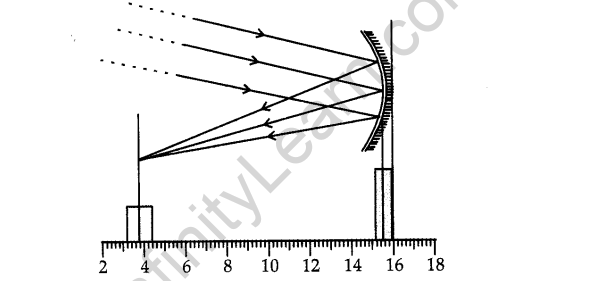CBSE Sample Papers for Class 10 SA2 Science Solved 2016 Set 10
SECTION-A
1.An organic acid ‘X’ is a liquid which often freezes during winter time in cold countries. It has molecular formula C2H402. On warming with ethanol in the presence of a few drops of cone. H2S04 a compound Y with a sweet smell is formed.
(a)Identify ‘X’ and ‘Y’.
(b)Write chemical equations for the reactions involved.
2.What is speciation ? .
3.”We need to manage our resources”. List two reasons to justify this statement.
4.List two preparations shown every month by the uterus in anticipation of pregnancy in humans.
5.An object is kept at a distance of 5 cm in front of a convex mirror of focal length 10 cm. Calculate the position and nature of the image formed.
6.”Affluent life style has a negative effect on the environment”. Justify this statement with the help of an example.
7.(a)Identify, from the following, the hydrocarbons that can undergo addition reactions:
C3H4, C2Hg, CH^ C2H4. Justify your answer.
(b) Write the name of the homologous series to which they belong to.
8.(a) List four characteristics of homologous series.
(b) Draw the electron dot structure of carbon dioxide.
9.Carbon has the unique property to form bonds with other atoms of carbon.

(i)Name the characteristic property of carbon as depicted in the fig. A
(ii)Give reason for this unique property of carbon. .
(iii)Draw the structure of cyclohexane.
10.The elements Li, Na and K, each having one valence electron, are in period 2,3 and 4 respectively of modern periodic table.
(i)In which group of the periodic table should they be ?
(ii)Which one of them is least reactive ?
(iii)Which one of them has the largest atomic radius ?
Give reason to justify your answer in each case.
11.(a)Mention two secondary sexual characters in human male.
(b)Why testis in male body are extra-abdominal ?
(c)Write the dual purpose served by urethra in males ?
12.The picture given below depicts the process of asexual reproduction in Plasmodium,

(a)Name the process depicted above and define it.
(b)What is meant by asexual reproduction ?
13.(a)Name the following:
(i)Thread like non-reproductive structures present in
(ii)’Blobs’ that develop at the tips of the non-reproductive threads in
(b) Explain how these structures protect themselves and what is the function of the structures released from the ‘blobs’ in Rhizopus.
14.A blue colour flower plant denoted by BB is crossbred with a white colour flower plant denoted by ww.
(i)State the colour of flower we would expect in their Fa progeny.
(ii)Write the percentage of plants bearing white flower in F2 generation when the flowers of F1 plants were selfed.
(iii)State the expected ratio of the genotype BB and BB is the F2
15.A 5 cm tall object is placed perpendicular to the principle axis of a convex lens of focal length 12 cm. The distance of the object from the lens is 8 cm. Using the lens formula, find the position, size and nature of the image formed.
16.A glass slab made of a material of refractive index nj is kept in a medium of refractive index n2. A light ray is incident on the slab. Complete the path of rays of light emerging from the glass slab, if :
(a)n1 > n2 (b) n1 = n2 (c) n1< n2.
17.(i)A ray of light falls normally on a face of a glass slab. What are the values of angle of incidence and angle of refraction of this ray ?
(ii) Light enters from air to a medium ‘X’. Its speed in medium ‘X becomes 1.5 x 108 m/s. Speed of light in air is 3 x 108 m/s. Find the refractive index of medium ‘X.
18.A girl was playing with a thin beam of light from her laser torch by directing it from different directions on a convex lens held vertically. She was surprised to see that in a particular direction the beam of light continues to move along the same direction after passing through the lens.
(i)State the reason for this observation.
(ii)If white light source is used with (a) parallel, (b) non-parallel sides, record your observations.
19.What are hydrocarbons ? Write the name and general formula of (i) saturated hydrocarbons, (ii) unsaturated hydrocarbons, and draw the structure of one hydrocarbon of each type. How can an unsaturated hydrocarbon be made saturated ?
20.(a) Name two sexually transmitted disease.
(b)Why prenatal sex determination is prohibited by law ?
(c)What are the different methods of contraception ?
21.What is speciation ? What are the factors that lead to speciation ?
22.(a) State the main purpose of water harvesting system and also mention the source which fills the pond behind harvesting structures.
(b) What is meant by food chain ? “The number of tropic levels in a food chain is limited.” Give reason to justify this statement.
23.By giving reasons state your observations when a parallel beam of white light:
(i)is passed through a hypo-solution and then focussed on a white screen.
(ii)is passed through a hypo-solution (to which few drops of sulphuric acid is added) and then focused on a white screen.
24.(i) Define magnification. Write its SI units.
(ii)You are provided with two convex lenses of focal length 15 cm and 25 cm, respectively. Which of the two is of larger power ? Give reason for your answer.
(iii)A 20 cm tall object is placed perpendicular to the principal axis of a convex lens of focal length 10 cm. The distance of the object from the lens is 15 cm. Find the nature, position and size of the image. Also find its magnification.
SECTION-B
25.In the preparation of soap, ‘X is used as a solvent:
(A) Alcohol (B) Aldehyde
(C) Alkali (D) Acetone
26.When a student performs saponification, he observes that the container becomes hot. This indicates that saponification reaction is :
(A) Endothermic (B) Exothermic
(C) Both (A) and (B) (D) Neither (A) nor (B)
27.Soap micelles in water will not come together to precipitate because of :
(A) Ion-ion attraction between micelles (B) Ion-ion repulsion between micelles
(C) Electro negativity of micelles (D) Electro positivity of micelles
28.Four students performed the experiment of tracing the path of a ray of light through a glass slab. They were asked to label angle of incidence (i) angle of refraction (r) and angle of emergence (e) on it. Diagrams drawn by four students A, B, C, D were as shown below :

Correct labelling has been done by :
(A) A (B)B (C) C (D) D.
29.After performing the experiment of tracing the path of ray of light through a glass slab, students were asked to find the relation between angle of incidence (i) angle of refracton (r) and angle of emergence(e) Four students A, B, C, D presented their inference as :

30.Yeast cells are :
(A) Oval (B)Rectangular (C) Cuboidal (D) Irregular
31.The focal length of a concave mirror in the experimental set-up, shown below is equal to :

(A) 10.3 cm (B) 11.0 cm
(C) 11.7 cm (D) 12.2 cm
32.Identify the figures showing the process of budding in yeast

(A) I, II and III (B) II, III and IV
(C) I, II and IV (D) III, IV and I
33.Based on the study of (a) binary fission in Amoeba and (b) budding in yeast with the help of prepared
1.A student has to focus his compound microscope to observe a prepared slide showing different stages of binary fission in Amoeba. The steps he is likely to follow are listed below in a haphazard manner:
I.Adjust the diaphragm and the mirror of the microscope so that sufficient light may enter to illuminate the slide.
II.Fix the slide on the stage carefully.
III.Adjust the microscope to high power and focus.
IV.Adjust the microscope to low power and focus.
The correct sequence of the above steps to observe the slide under the microscope is
(A) I, II,IV, III (B) II,I,IV,III
(C) II, IV, I, III (D) I, IV, II, III
2.When you study a slide showing different stages of budding in yeast, you observe the following stages:
I.The bud may get separated from the parent body and develop into a new individual.
II.The body of the bud develops and gives rise to another baby bud.
III.A bud comes out in any direction from the body of the parent cell.
IV.Thus they may form a colony.
The proper sequence of the above stages is :
(A) II, I, III, TV (B) II, III, I, IV
(C) III,II,UV (D) III, I, II, IV
34.Are binary fission and budding faster processes of reproduction when compared to sexual reproduction? Justify.
35.Write the chemical equation for the following reaction: Sodium carbonate is made to react with ethanoic acid.
36.A lens forms an upright and diminished image of an object irrespective of its position.
(i)What kind of lens is this ?
(ii)State one more characteristic of this image.
(Download Questions PDF)
[gview file=”https://resultscareer.files.wordpress.com/2016/02/cbse-sample-papers-for-class-10-sa2-science-solved-2016-set-10-questions.pdf”]





